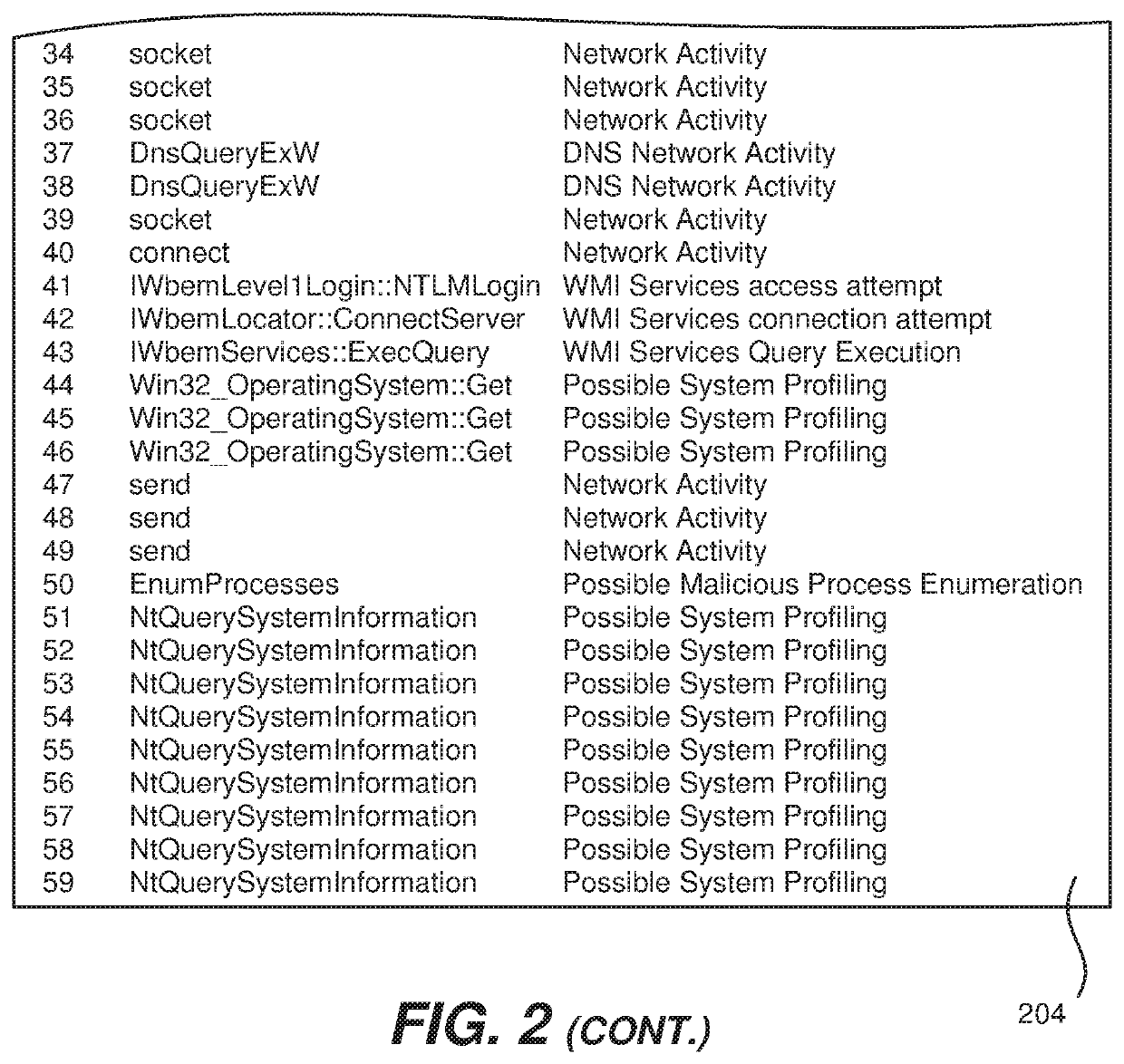Malware detection using locality sensitive hashing of API call sequences
a locality sensitive and malware detection technology, applied in the field of malware detection, can solve the problems of unacceptably high true/false positive rate testing, presenting problems for both approaches, and search may be conducted far faster than, so as to achieve faster distance calculation, faster hash computation, and more accurate results
- Summary
- Abstract
- Description
- Claims
- Application Information
AI Technical Summary
Benefits of technology
Problems solved by technology
Method used
Image
Examples
Embodiment Construction
[0026]As mentioned above, the present invention is able to monitor API (application programming interface) calls of an executing file and determine if that file is malicious or not. During execution, a Microsoft Windows portable executable (PE) file will invoke a series of API calls during its run time which represents how that file behaves; this series of API calls is referred to as the API call sequence. By way of example, invocation of a certain sequence of API calls may indicate process injection, cryptographic API invocation, network activity followed by file system manipulation, which sequence may be indicative of ransomware activity.
[0027]Other examples of malicious software (followed by the API call sequence that is indicative of that malware) are: Key Logger (FindWindowA, ShowWindow, GetAsyncKeyState) (SetWindowsHookEx, RegisterHotKey, GetMessage,UnhookWindowsHookEx); Screen Capture (GetDC, GetWindowDC), CreateCompatibleDC, CreateCompatibleBitmap, SelectObject, BitBlt, Writ...
PUM
 Login to View More
Login to View More Abstract
Description
Claims
Application Information
 Login to View More
Login to View More - R&D
- Intellectual Property
- Life Sciences
- Materials
- Tech Scout
- Unparalleled Data Quality
- Higher Quality Content
- 60% Fewer Hallucinations
Browse by: Latest US Patents, China's latest patents, Technical Efficacy Thesaurus, Application Domain, Technology Topic, Popular Technical Reports.
© 2025 PatSnap. All rights reserved.Legal|Privacy policy|Modern Slavery Act Transparency Statement|Sitemap|About US| Contact US: help@patsnap.com



